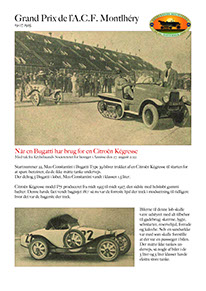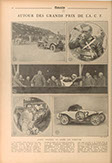
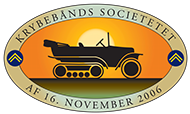
Kegresse.dk
Retromobile
At the Retromobile exhibition this year, there were several effects about Kégresse: model cars, many books, several of them old, and small bronze busts.
We were lucky enough to find an original speedometer for a P19. This unit is not for our model, but we are fitting it in the car in hopes of, one day, finding the right one for our P17 E. This model is produced and fitted to the Kégresse produced for the French Army. The civilian models had a different version.
Can anyone tell us more about the speedometer for the Kégresse? Take a picture of yours and send it to us.




















1 - 20
<
>

Copenhagen Historic Grand Prix: the 100 year for Bugatti type 37 with our Kégresse
The 3th august 1924 was exactly 100 years since the first appearance of the Type 35. Krybebånds Societet together with Bugatti Club Denmark agreed to hold a joint event during the Grand Prix in Copenhagen, and exactly on the SAME DAY celebrate it with champagne!
Bugatti club collected 11 Grand prix cars (type 35, 37 and 51), all Danish owned! Krybebånds Societet erected the big tent which will imitate the camp Bugatti had in 1924. It turned out to be a fantastic day!
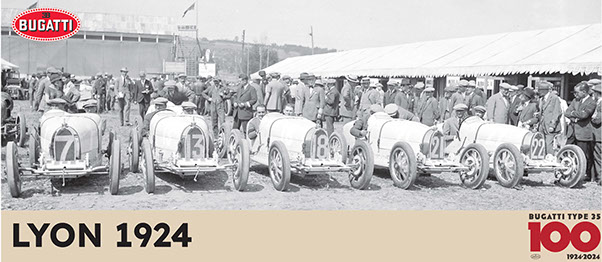
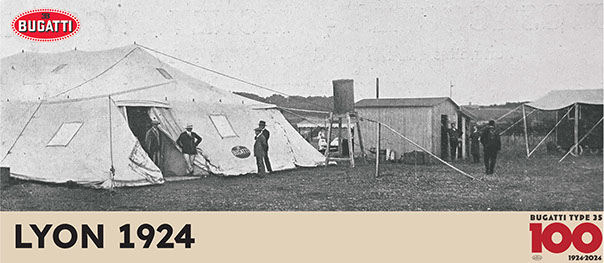






















1 - 22
<
>
The type 35
In the winter of 1923-24, they worked at the Bugatti factory in Molsheim intensely - and secretly - on one brand new racing car, conceived and engineered by Ettore Bugatti himself. A car that had to do away with the times competing racing cars, and which were to remain groundbreaking and innovative in many respects.
It was the Type 35.
Bugatti had succeeded in holding off development the car secret right up until the premiere at the annual Grand Prix de l'Automobile Club de France, which was held in Lyon on 3 August 1924. Here Bugatti met up with six copies of the new wagon. The five of them had to drive the race itself, while the sixth chariot, the prototype, was brought along as an exhibition car.
The race was run on a 23 km long route on off singles roads between Lyon and Givors and the 20 participants had to run 35 laps after a rolling start - in total 810 km.
In the five light blue carriages were the drivers Jean Chassagne (7), Ernst Friedrich (13), Pierre de Vizcaya (18), Leo Garnier (21) and Bartalomeo Costantini (22), each with their mechanic in the passenger seat.
Thoughtful souls should send a thought to the brave
mechanics who with life as an effort tried
to stick to the hot cars and therefore had
hard to predict what happened on the bad ones
gravel roads.
At the Grand Prix in Lyon on 3 August 1924 there were, in addition to the five wagons from Molsheim, registered teams from Alfa Romeo, Delage, Rolland-Pillain and Sunbeam included famous names such as Campari, Divo, Benoist, Seagrave and Jules Goux behind the wheel. But unfortunately, Bugatti's great victory did not materialize, as only Chassagne and Friedrich completed the race in a 7th. and 8th place. The other three exited with technical problems, a fate they also shared with 9 other wagons from the field. Thus, Giuseppe Campari could drive the victory home of Alfa Romeo.
A crucial problem for Bugatti was the tires had requested. It turned out that the vulcanization was not good enough, causing the rubber to wear out quickly and tore loose. For that reason, two of the cars went out while Costantini had to retire with a steering fault.
Technically, the Type 35 also had too little engine power compared to its competitors in Lyon. However, in spite of the disappointing end result, the wagon became a sensation. In the coming years, the Type 35 was further developed into the Types 35A, 35T, 35C and 35B in addition to 37, 37A and 39 and the later 51. Overall, the Type 35 was to come to take his victory lap on the world's racetracks, thanks to its low weight, flexible engine and eminent management.
Bugatti was not content to let its own people drive the cars, but also sold them to speed-loving customers.
Thus, anyone with the money in order could register say a race with his drivable Bugatti directly to the race. To date, the Type 35 and its successors variants, with more than 2000 victories in the book, the winningest car in racing history.
Grand Prix de l'A.C.F. Montlhéry
19.07.1925
When a Bugatti needs a Citroën Kégresse
Starting number 22, Meo Constantini in the Bugatti Type 39 is pulled by a Citroën Kégresse to the start for to save petrol, as they were not allowed to refuel en route.
5 Bugattis took part in the race, Meo Constantini won in the 1.5 liter class.
Citroën Kégresse model P7t produced from mid 1925 to mid 1927, the last with solid rubber belts. This one had had the rear gear turned 1800, so now the front wheels were straight, unlike before where it was the rear ones that pulled.
The cars for this race had to be equipped with all accessories for street use: screens, lights, self-starter, spare wheel, windscreen and canopy. Even a sandbag was with who had to imagine that there was a passport holder in the car. There was no refueling on the way, then some of the cars in them 3 liter and 5 liter classes had extra large tanks.
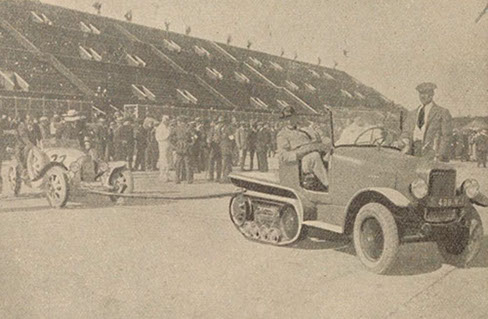









7 - 9
<
>
Classic Car Festival Sogenfri
The annual classic Car Festival, just bring your car and relax with the others. Naturally, the Kégressen had more attention than the Ferrari GTO and the Ford GT 40!

